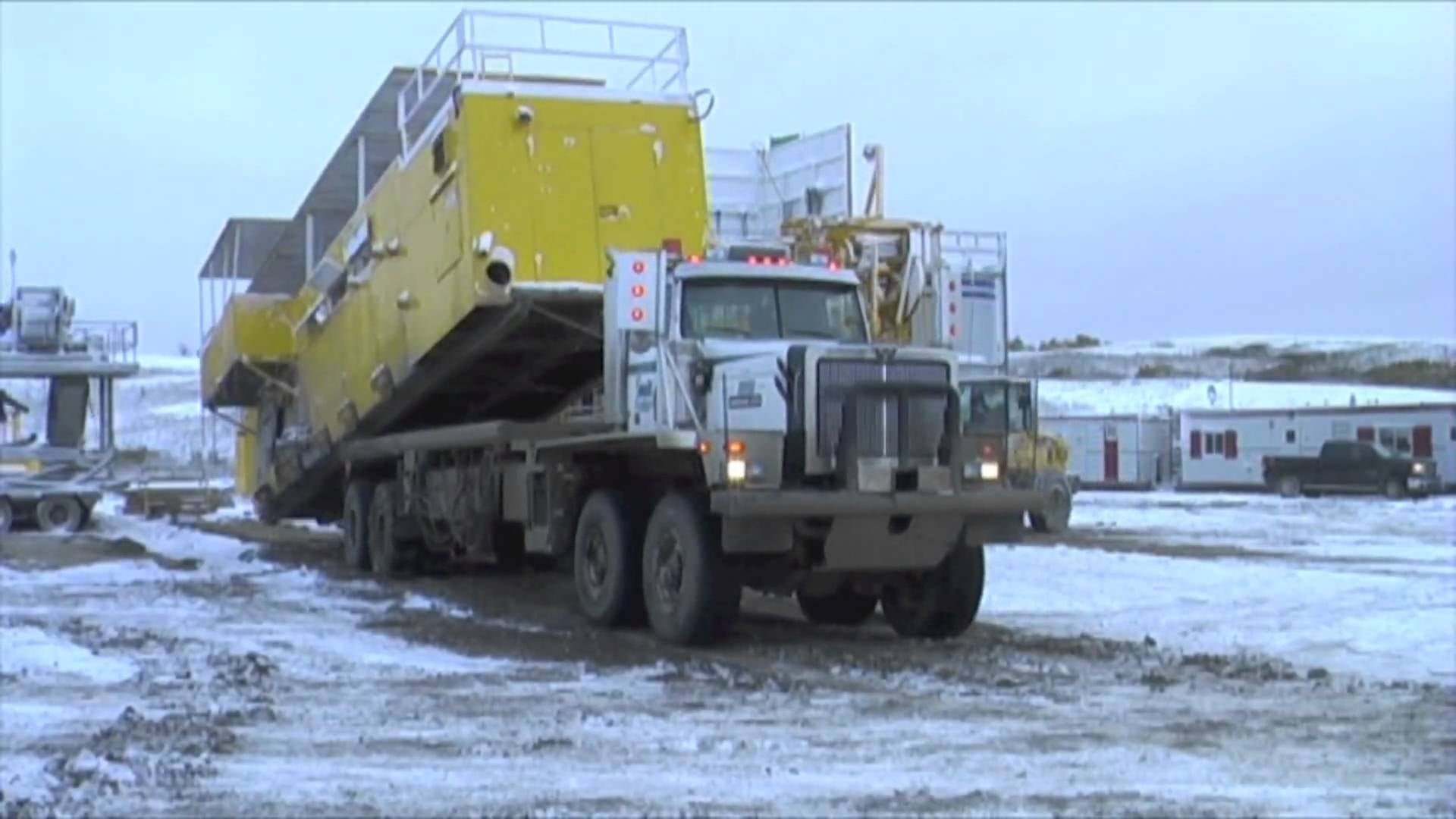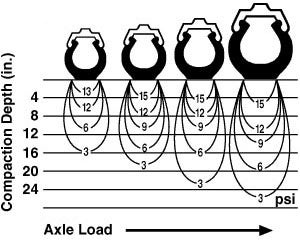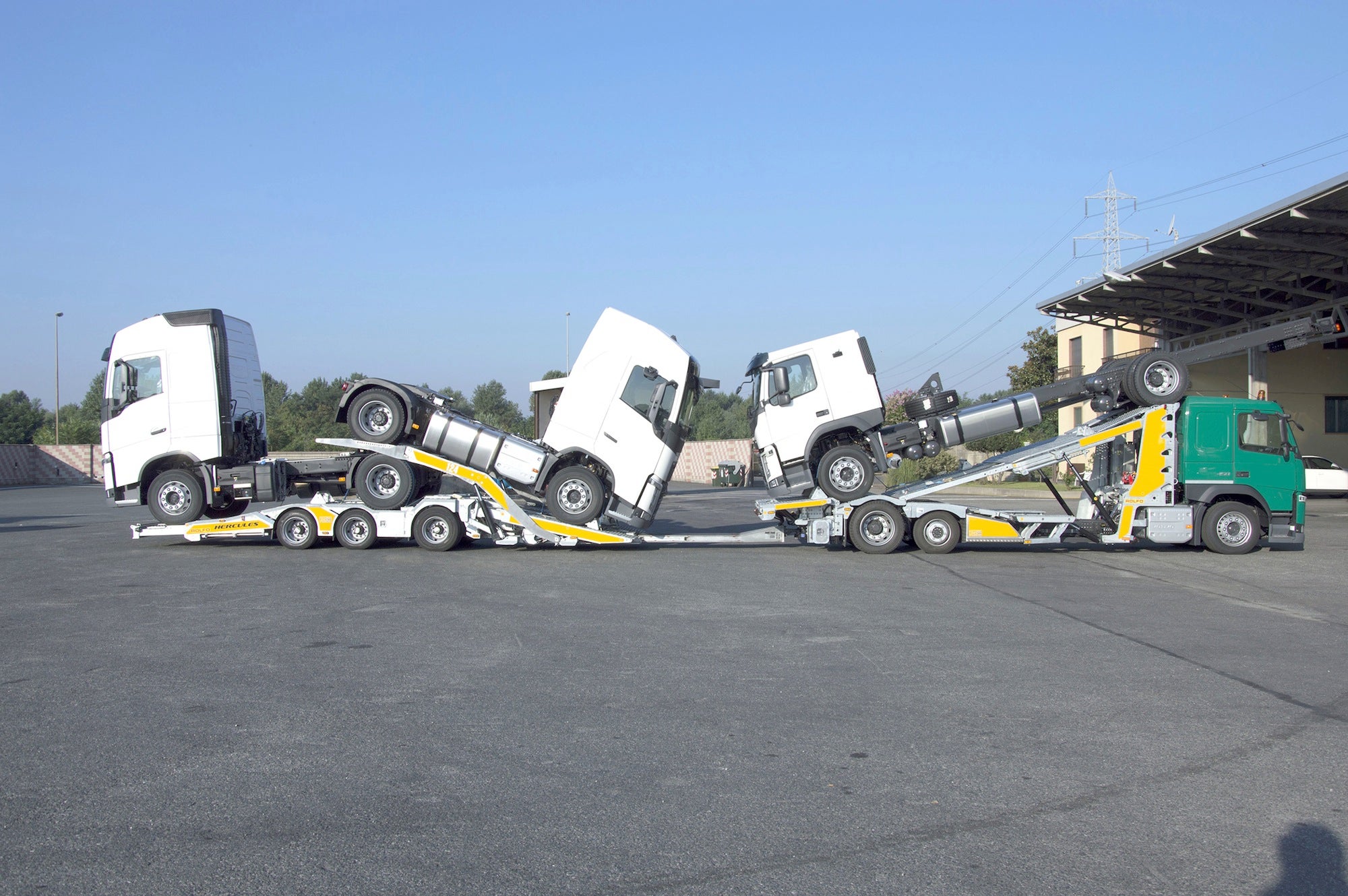 by "HammerheadFistpunch" (hammerheadfistpunch)
by "HammerheadFistpunch" (hammerheadfistpunch)
Published 03/09/2017 at 17:57
 by "HammerheadFistpunch" (hammerheadfistpunch)
by "HammerheadFistpunch" (hammerheadfistpunch)
Published 03/09/2017 at 17:57
Tags: NEEEEEEERD
STARS: 4

Some interesting maths I did about road use and road tax just now that I thought I would share. You are welcome to question my math and my methods.
I work under the assumption that the things that hurts roads is ground pressure. the force per square inch. more weight over less area. The same reason my feet hurt more as I get older. It might not be a solid assumption but Iím going with it.
Under that assumption we can assume that cars that have higher ground pressures do more damage to our infrastructure than cars with lower.
I tried to figure out how much my car, a Prius and a Full loaded Semi truck damage the road, and then with road tax, pay into the fund to fix it.
First up let me say figuring out ground pressure isnít easy...or at least there were no easy calculators on the googles. I did find data on Semi trucks, but nothing on cars specifically, so for those Iím going with recommended tire pressure. Since air pressure carries the load, and its already in PSI I figured that would take the guess work out of it and make it even.
For my truck the recommended pressures are 32/32 (front/rear) so I assume a 32 PSI average ground pressure .
For the Prius its 33/35 (though forums tend to report that number as being low). So for the Prius we use 34 psi average ground pressure . Why is a 3100 lb hybrid less than my Cruiser? ĎCause tire size. Less weight, but proportionally less contact patch = higher ground pressure.
Semi trucks seem to have 115 square inches per each dual tire, and 90 for each single. For an 18 wheeled tandem axle rig thats 1100 square inches. Given that max GCWR for many states is 80,000 lbs, Im using that at my number. Which gives us 72 PSI average ground pressure.
So a fully loaded semi presses down about 2x as hard as a Prius on the road. BUT, what does he pay into to the funds to fix and maintain those roads?
For my cruiser its between $200-250 (my state gas tax is $.245 nationally its about $.184) [15,000 miles/yr @ 13 mpg]
For the Prius its between $117-147 [fueleconomy.gov estimates 600$ of fuel/yr]
For the fully loaded Semi its about $1730 [45,000 miles/yr @ 6.5 mpg $.245 tax rate]
Boil it down per mile
Cruiser - $.015/Mile
Prius - $.0088/Mile
Semi - $.038/Mile
Using the ground pressure of 30 PSI = 1 as a damage metric [I just made it up but it seemed to hit a generic ďcarĒ level] means:
Cruiser - 1.06X damage
Prius - 1.13X damage
Semi - 2.4X damage
Now I realize this probably doesnít scale linearly, but its easier this way.
Factor in who pays into the system though and it works out like this.
Cruiser - $.014/Mile damage factor adjusted
Prius - $.0033/Mile damage factor adjusted
Semi - $.016/Mile Damage factor adjusted.
So yeah, Semiís dent the hell out of the road, but they also pay more pack into the fund to fix it than most people realize. And Prius driver? Youíre doing diddle squat so you can take your big truck hate elsewhere.
Now for some musics
!!! UNKNOWN CONTENT TYPE !!!
 "For Sweden" (rallybeetle)
"For Sweden" (rallybeetle)
03/09/2017 at 17:59, STARS: 1
If I read this, I think I have to bill you for the time
 "bob and john" (bobandjohn)
"bob and john" (bobandjohn)
03/09/2017 at 18:06, STARS: 2
i think you are missing a number here.. how much area you are affecting.
these numbers are good, dont get me wrong. but that truck is exerting that pressure over a FAR greater area then the prius or the cruiser, and the cruiser has more area its affecting too.
only reason I bring this up is because if we were using just these numbers, then my 400lbs motorcycle is doing as much damage as your 6000lbs land cruiser. (I have 32 PSi front, 36 rear)
dont get my wrong, its a really good starting point. just needs a little finessing.
 "benjrblant" (benjblant)
"benjrblant" (benjblant)
03/09/2017 at 18:06, STARS: 1
So... Youíre suggesting that an American tax isnít 100% exactly fair?
What else is new?
 "For Sweden" (rallybeetle)
"For Sweden" (rallybeetle)
03/09/2017 at 18:07, STARS: 0
All taxation is unfair, because the government shouldnít have to collect property from the people. If all property is collective, there wonít be taxes.
 "HammerheadFistpunch" (hammerheadfistpunch)
"HammerheadFistpunch" (hammerheadfistpunch)
03/09/2017 at 18:08, STARS: 1
I hear you, and thats a fluid dynamics/materials science question as to the elasticity and load bearing properties of roads. I canít answer that question, this is more a rough guide. In terms of road pressure though, yes, your motorcycle is carving into the road as much as the cruiser. This is pretty easy to demonstrate in snow or mud. How the road reacts to localized pressure versus distributed pressure is beyond me.
 "Highlander-Datsuns are Forever" (jamesbowland)
"Highlander-Datsuns are Forever" (jamesbowland)
03/09/2017 at 18:09, STARS: 3
Various sources state that one truck trip on a road is equivalent to approximately 9600-10000 passenger car trips over the same road. I have heard the same from Caltrans employees. So the heavy commercial truck should be paying quite a bit more per mile than a passenger car.
 "benjrblant" (benjblant)
"benjrblant" (benjblant)
03/09/2017 at 18:09, STARS: 0
Solution: make everyone drive a Trabant?
 "ESSSIX GmbH - Accountant/Wagon Thumper" (thedlo)
"ESSSIX GmbH - Accountant/Wagon Thumper" (thedlo)
03/09/2017 at 18:10, STARS: 0
Very good! But for HUT, you need to calculate laden and unladen, and each carry different rates. So hes not paying the higher rate for the total miles traveled.
Also Semis kill the roads at the line, by me the roads are good till you approach the light, then it gets all bumpy from trucks having to sit and wait for the light, then the amount of force the apply getting started again.
The best thing would be to create a traffic light system that senses what cars are approaching the light, if it can sense a semi coming and it stays green to preserve momentum of that truck (or truck), that way we would save time and money, and road maintenance.
Thereís a rock quarry here, and we can see trains of trucks, and be cause of the hills, and lights, it creates traffic for nothing, if the lights were prioritized, things would be 1000% smoother, in both senses.
 "For Sweden" (rallybeetle)
"For Sweden" (rallybeetle)
03/09/2017 at 18:10, STARS: 2
Ja
 "HammerheadFistpunch" (hammerheadfistpunch)
"HammerheadFistpunch" (hammerheadfistpunch)
03/09/2017 at 18:11, STARS: 1
!!! UNKNOWN CONTENT TYPE !!!
 "bob and john" (bobandjohn)
"bob and john" (bobandjohn)
03/09/2017 at 18:11, STARS: 0
more mechanics of materials.
and to answer your question, they sag. look at any major hwy, and you will see in each lane, you have the lane dipping in the tire tracks. keep it up for long enough, and you will crack the road.
 "HammerheadFistpunch" (hammerheadfistpunch)
"HammerheadFistpunch" (hammerheadfistpunch)
03/09/2017 at 18:12, STARS: 1
Just saying that people bitching about truck drivers need to examine their own footprint on the roads of this land of deeply flawed tax structure.
 "vondon302" (vondon302)
"vondon302" (vondon302)
03/09/2017 at 18:13, STARS: 0
Also most loads that I know of are overloaded. At least here in Michigan 90 percent of weigh stations are shuttered. If your not leaving the state the trucker could care less. I work at a major automotive distributer and have been personally bitched out by a trucker going to Illinois for almost. double the legal weight. Also I believe semi taxes vary by†state. When I went Utah a few years ago the roads were great but the weigh stations were frequent.
I wonder if a squirrel would eat coffee beans? Off to the bird feeder to find out!
 "HammerheadFistpunch" (hammerheadfistpunch)
"HammerheadFistpunch" (hammerheadfistpunch)
03/09/2017 at 18:14, STARS: 0
That suggests that ground pressure not only doesnít scale linearly, it doesnít even scale to the 3rd. I have a hard time believing that its as bad as 10,000 passenger cars, but Im no science guy.
 "HammerheadFistpunch" (hammerheadfistpunch)
"HammerheadFistpunch" (hammerheadfistpunch)
03/09/2017 at 18:15, STARS: 0
yeah, I definitely see that here in Utah, we have a lot of highways with a lot of heavy traffic (I15, I70, I80)
 "CTSenVy" (CTSenVy)
"CTSenVy" (CTSenVy)
03/09/2017 at 18:15, STARS: 0
So how hard would you hit me if I asked how wear and tear due to weather effects your numbers?
 "HammerheadFistpunch" (hammerheadfistpunch)
"HammerheadFistpunch" (hammerheadfistpunch)
03/09/2017 at 18:19, STARS: 1
none hard, just I would give you one of these?

 "Highlander-Datsuns are Forever" (jamesbowland)
"Highlander-Datsuns are Forever" (jamesbowland)
03/09/2017 at 18:20, STARS: 3
I think that the trucks weight approaches the load design for roadways (but Iím not that kind of engineer) and that impacts much more stress upon the road section than a passenger car. So think of it like fatigue cycling a piece of aluminum to 75% of itís yield strength. Eventually the repetitive cycles of fatigue will weaken the material. Where something like a prius will be like 5% of the yield of the road section, so barely noticeable.
When Iím designing things under roadways I use HS-20 loading which is 20,000 lbs/square foot. That is over a truck limit by quite a bunch but itís what we have to design to to prevent damage to things like manholes and pipes.
I do agree however that road taxes would be better porportionally if taxed by weight and not by fuel consumption. We would then all be driving morganís and aerial atoms.
 "vondon302" (vondon302)
"vondon302" (vondon302)
03/09/2017 at 18:22, STARS: 1
This!
 "HammerheadFistpunch" (hammerheadfistpunch)
"HammerheadFistpunch" (hammerheadfistpunch)
03/09/2017 at 18:24, STARS: 1
!!! UNKNOWN CONTENT TYPE !!!
 "benjrblant" (benjblant)
"benjrblant" (benjblant)
03/09/2017 at 18:25, STARS: 0
So, try this math with your tires on the Prius?
 "RamblinRover Luxury-Yacht" (ramblininexile)
"RamblinRover Luxury-Yacht" (ramblininexile)
03/09/2017 at 18:27, STARS: 0
Itís probably even more complicated than that. The enlarging of the pressure area is mostly not in the width direction, but lengthwise along the direction of travel - so the only realistic multiplication to apply on a tire by tire basis of area affected is the width, because itís a single load with disturbance event over a given width as it passes.. Except: with multiple axles, you get a higher number of passes (duty cycles on the road) because it can unload between passes, and with dual rear tires, youíre hitting a wider area of road... but also not necessarily the area that will wear out first from other use. Offset by using unused portions of the road.
Pulling something completely out of my ass, the tractor trailer has maybe a 30% wider contact patch than the Prius per single front tire, and has maybe an overall ďwidth impactĒ twice the prius for the dually axles, and a 1.5x effect for the closely-paired axles (instead of 2x), because the surface doesnít fully unload. Using my butt-figures for a twin trailer, twin cab, then, and a double load over contact patch, 2x (1.3 + 2*1.5 +2*1.5) = 14.6. Which is still on a dollar basis 4x the Prius for a given amount of damage, but less obviously absurd.
Complicating this, if the substrate under the road is Fo Shit, then the overall disruption is more of a problem, and there might be more elastic limits being exceeded. More complicating, the disruption of a *good* road surface is probably more like the square of the pressure and not linear. More more complicating in another direction, the area most affected with bad substrate is probably the region in shear at the side of the contact patch, which is going to be more related to PSI again and not area overall. Thatís the damage basis on which the bike punches above its weight. (Heh)
So: truck is getting overcharged, probably, but itís hard to say just how much.
 "HammerheadFistpunch" (hammerheadfistpunch)
"HammerheadFistpunch" (hammerheadfistpunch)
03/09/2017 at 18:28, STARS: 0
I hear your yield arguments, but i think a road would act a little less...Newtonian...given that its an amalgamated substance held together with rubbery glue. kind of like how steel would be less susceptible to breaking at 75% yield vs aluminum. Difference modulus ratings and what not.
 "HammerheadFistpunch" (hammerheadfistpunch)
"HammerheadFistpunch" (hammerheadfistpunch)
03/09/2017 at 18:28, STARS: 0
If I knew my contact area I could. I donít. I should try the paper trick tonight and find out.
 "jariten1781" (jariten1781)
"jariten1781" (jariten1781)
03/09/2017 at 18:31, STARS: 0
Been a while since I looked at this, but the mechanism of failure is compression per pass...so you have to account per tire as they each cause a compression cycle (aka you canít average, a theoretical semi of the same weight/pressure as a car will do ~5◊ damage). Itís also non linear, but I donít recall the factor like at all...but the total is like one semi per 9000x autos.
 "Highlander-Datsuns are Forever" (jamesbowland)
"Highlander-Datsuns are Forever" (jamesbowland)
03/09/2017 at 18:32, STARS: 1
Yeah whatís the going rate at AECOM for an Engineer/Scientest level 8?
 "HammerheadFistpunch" (hammerheadfistpunch)
"HammerheadFistpunch" (hammerheadfistpunch)
03/09/2017 at 18:33, STARS: 0
Thats what highlander said. Seems high. Even if it doesnít scale linearly, there is still only so much pressure per tire and its only so many times greater than than a passenger car. Granted there could be some complicated ripple effect, but I still have a hard time buying 9000-10000:1 and if it IS the case that the obvious solution to our rapidly deteriorating infrastructure is to add axle and/or reduce truck weight. since truck weight isnít going anywhere...I guess its axles.
 "vicali" (vicali)
"vicali" (vicali)
03/09/2017 at 18:38, STARS: 0
I used to be in Landuse in Northern Alberta, we worked for a Forestry company who owned roads all over the place. Oil and Gas used these road while exploring, drilling, and moving rigs.
I used to create road use agreements all day long, most were for pickup traffic = no liability and pay a flat rate around $100/km per month. Most agreements were the main Berland Road out of Fox Creek - the gate at the back of the road was at 186.5km so most agreements were just under $2000 for a month of use.
Then there are rig moves, when about 30 or so of these go down your dirt road;

They get a different rate, usually two or three times the regular, plus a road survey is done before and after the move. Any damages to the roads would be repaired and fixed by the company.
During breakup from March to June the roads are mud - most companies would leave their equipment where it was rather than pay to fix the roads. Some used super cool low ground pressure rigs to get out without wrecking everything. Some just moved anyways, and then paid to fix the damages.
What I learned; Oil and Gas gets whatever they want, and they donít care how much it costs. We regularly opened the mail in the morning to find cheques up to and over $100,000 every day of the week, all year long.
 "LongbowMkII" (longbowmkii)
"LongbowMkII" (longbowmkii)
03/09/2017 at 18:46, STARS: 0
Mass + mi based tax:
<1ton- $x
1-2tons- y
2-5 tons- z
5+- w
Then ban semis and get freight on the rails where it belongs.
 "jariten1781" (jariten1781)
"jariten1781" (jariten1781)
03/09/2017 at 18:50, STARS: 0
I mean, itís been like 15 years since I looked but I had to read a bunch of DOT white papers on the problem when we were trying to figure out how to budget for restoration and modernization for 60 years of wear for different road types on a facilities project. I didnít see anything crazy in the methods and the appox. 9k number was the take away.
Also, the numbers get worse when you add in other vectors. On a straight road/constant speed you can just assume a vertical load per cycle...when you throw in braking (and to a much lesser degree acceleration) you get a lateral load that can cause the layers to move independently and leads to a rippling/sloughing effect. Hence the intersections where they havenít layed a different surface getting all wavy. That also is related to weight and doesnít scale 1:1.
 "just-a-scratch" (just-a-scratch)
"just-a-scratch" (just-a-scratch)
03/09/2017 at 18:56, STARS: 0
Since youíre really only going for estimates, you might as well just treat the tires like thin membranes. Guesstimate the corner weight, and divide by the tire pressure. Itís a reasonable estimate, but not super-duper accurate.
 "HammerheadFistpunch" (hammerheadfistpunch)
"HammerheadFistpunch" (hammerheadfistpunch)
03/09/2017 at 19:14, STARS: 0
I just keep thinking that if each truck is 9k to 1 then our road are either way overengineered for passenger use and taxing regular users makes no sense or they should be crumbling at a much faster rate
 "JRapp: now as good as new again" (jrapp)
"JRapp: now as good as new again" (jrapp)
03/09/2017 at 20:00, STARS: 0
I think your 6.5mpg for a fully laden 18-wheeler at 80,000lb is a bit high. Newer ones get that, but realistically youíre probably looking at something a bit lower for all the old trucks still on the road.
That said, that only helps your case.
 "gmporschenut also a fan of hondas" (gmporschenut)
"gmporschenut also a fan of hondas" (gmporschenut)
03/09/2017 at 21:13, STARS: 0

The issue is how the pressure is distributed into the road, and the pressure distributed. The issue is that a tractor trailerís load takes the entire thickness of the road surface to dissipate, the road isnít acting like one single piece of steel. that stress is moving the road, adding fractures. In some areas road crews place corrugated sheet metal between road base layers to distribute the force allowing for thinner road surfaces. †



I just thought the above photo was neat.
poplar science had a good article on how the touchdown area of aiport runways is 15-25 feet thick concrete to disipate the massive pressure shock caused by a landing airliner vs maybe 1 ft for a taxiway. also it is why even small planes are required to touchdown on the same point †
 "jariten1781" (jariten1781)
"jariten1781" (jariten1781)
03/10/2017 at 07:25, STARS: 0
I can see how that would seem intuitively true, but if the engineerís are good itís not. Thereís a number of big rubrics they can follow (put out by the big Civil Engineering schools; I happen to know Texas A&M has a popular one since itís my alma mater so I tend to gravitate towards their material). You essentially end up with a number of factors...the weighting of the average truck traffic is generally the dominate factor, but in some locations weather is the dominate factor and on some type of roads (think major commuting parkways with restricted truck hours) passenger cars are. Theyíll do their surveys to determine the T=0 traffic numbers then they project for growth which is a bit of witchcraft. Combine it all and thatíll determine the quality of materials, the thickness of the various layers, whether or not you need to use different materials for shoulders and gutters, etc etc.
You could conceivably build expensive freight roads and relatively cheaper passenger roads, but that doesnít really make sense. In heavy freight trafficked areas passenger traffic provides negligible wear so thereís no purpose in paying for the extra road that will have its own recap costs when theyíre not degrading the expensive freight road; in commuting areas where cars are dominate the passenger road and freight road would be ~equal in initial design/outlay and wear so youíd end up with less available lanes for each type of traffic and more right-of-way would need to be procured.
Now, I suppose you could build only cheaper passenger designed roads and shift
all
heavy freight to rail then have strictly monitored weight for road
-
vehicles coming out of the yard to keep them from exceeding the design thresholds...but that means you have to centralize as it
í
d be untenable to supply all those <300k towns that don
í
t have rail yards with Transit Connects and it
í
d significantly damp the flexibility of the road system. I
í
m sure folks have run CBAs on that concept, seems like a glaringly obvious thesis project, but I
í
ve never read one so I
í
m not sure how it stacks up.